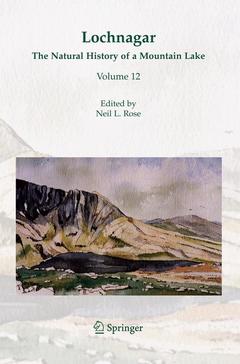Description
Lochnagar, 2007
The Natural History of a Mountain Lake
Developments in Paleoenvironmental Research Series, Vol. 12
Coordinator: Rose Neil L.
Language: English
Subjects for Lochnagar:
Keywords
Flora; climate change; ecosystem; environmental change; hydrology; vegetation; hydrogeology
503 p. · 15.5x23.5 cm · Paperback
Description
/li>Contents
/li>Biography
/li>Comment
/li>
Neil Rose’s first degree was in Chemistry with Geochemistry at University of Leicester (1981 – 1984). He then joined the British Antarctic Survey and spent 30 months in the Antarctic working on limnology of sub-Antarctic lakes and discovering the joys of lake sediment. Upon return to the UK, he joined the Palaeoecology Research Unit (later becoming the Environmental Change Research Centre - ECRC) at University College London as a Research Assistant. His PhD was awarded in July 1991 entitled "Fly-ash particles in lake sediments: Extraction, characterisation and distribution". Since then he has remained with the ECRC being appointed Principal Research Fellow in October 2001. His main research focus is in the use of lake sediments to determine spatial and temporal distributions of pollutants in remote lakes and this has led him to work in Svalbard, Greenland, Uganda, China, Alaska and many European mountain areas. Further research areas include the source apportionment of fly-ash particles and the use of SCP temporal profiles to provide lake sediment chronologies for the industrial period. His research at Lochnagar began in 1988 and shows no sign of stopping any time soon.




